Draining down a combi boiler system isn’t an annual task like a service but is needed in some situations. In most cases, it is a straightforward process to do with the right tools. You won’t need to open up the boiler because it can be drained from a radiator instead. Here, we show you step-by-step how to drain a boiler system.
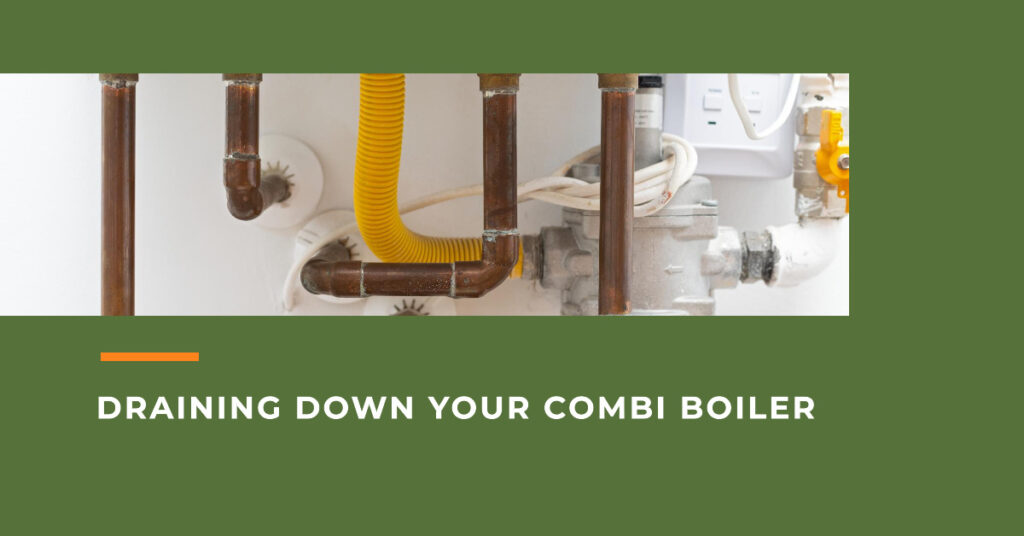
Draining a combi boiler steps
Follow these steps to drain a combi boiler:
- Get your tools ready.
- Turn off your boiler.
- Locate the drain valve.
- Connect a hose to the drain valve.
- Open the drainage valve.
- Open the bleed valves on the higher level radiators.
- Repeat for the downstairs radiators.
- Carry out plumbing work.
- Close and tighten the drain valve.
- Refill and repressurise the system.
The main reasons why you would want to drain a combi boiler are when your home will be empty for a long time in the winter; to remove limescale and sludge build-up in the central heating; to prevent flooding when replacing radiators or pipework in the heating system and to clear any blockages.
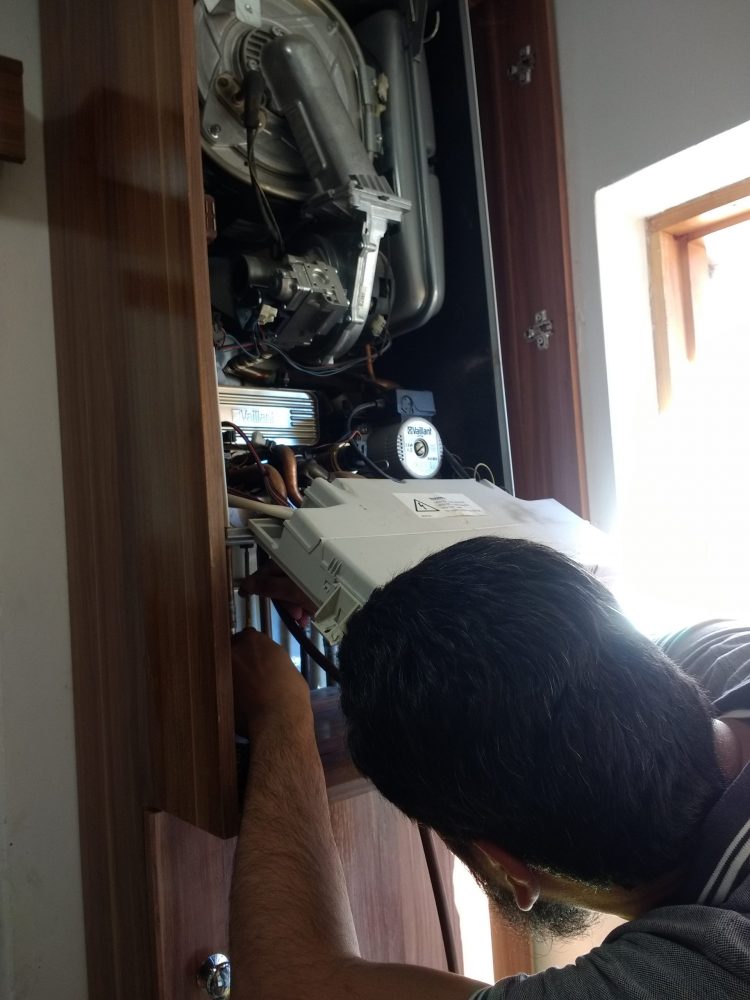
How to Drain a Combi Boiler: Step by Step
1. Get your tools ready
The tools you will need to Drain a Combi Boiler:
- Spanner or adjustable wrench to open and close the drain valve
- Radiator bleed key to open the bleed valves on the radiators
- Hose pipe with jubilee clip to attach to drain valve
- Bucket or container to catch any water spillage
- Towels or rags for clean up
- Flashlight to see valves in tight spaces
- Gloves for protection
- Safety goggles

2. Turn off your boiler
The first thing to do is to turn off the boiler both at the front of the appliance and at the wall switch. This makes a safe working environment.
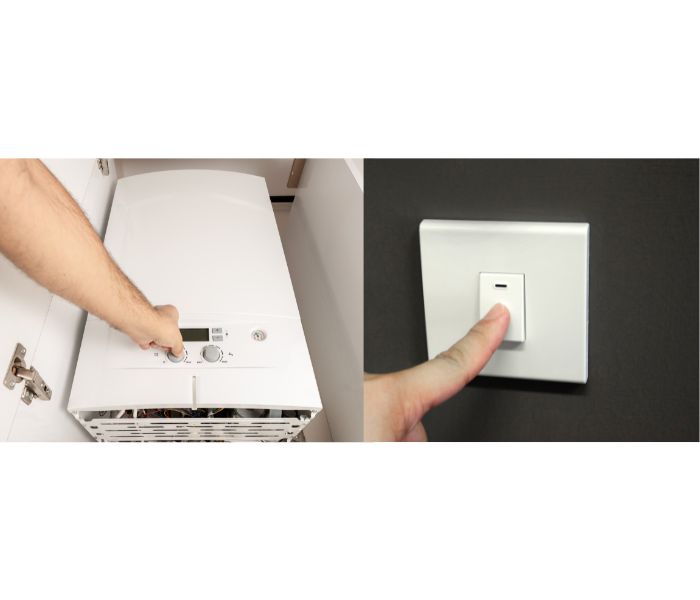
3. Locate the drain valve
Find the drain valve which is usually located under one of the downstairs radiators, often the one nearest to the front or back door of the house. It looks like the one in the image below.
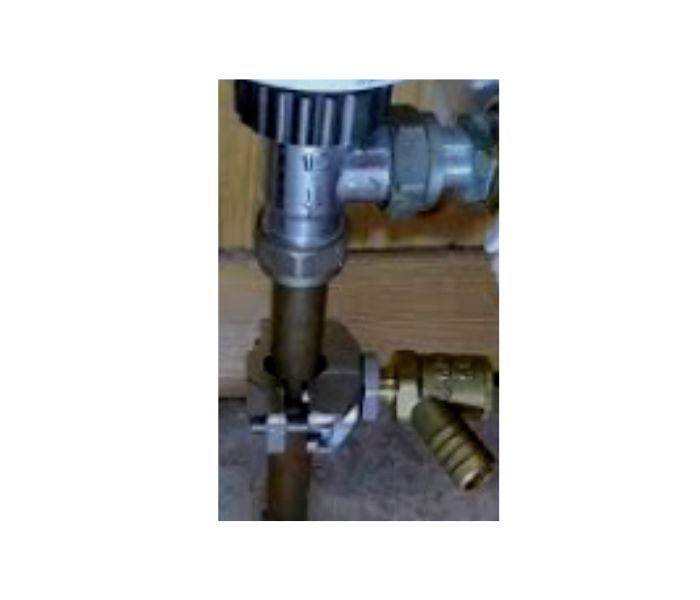
4. Connect a hose to the drain valve
Fasten the hose to the drain valve with a jubilee clip so the hose doesn’t come off. The other end of the hose will be to an outside drain.
Put a bucket underneath to collect any water seeping out of the valve which can sometimes happen.
Boiler Pressure Too Low? Here’s What You Need to Know

5. Open the drain valve
With a spanner, carefully open the valve to let water out, this can take a minute or two.
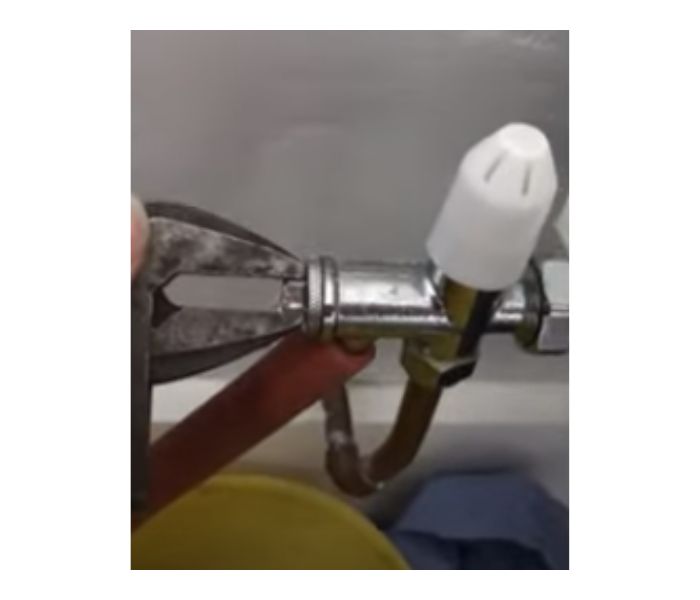
6. Open the bleed valves on the higher level radiators
With the drain valve still open, go to all the upstairs radiators in the house, and open the bleed valves on them with a bleed key. This helps water drain quickly.

7. Repeat for the downstairs radiators
Starting with the higher radiators helps the system drain properly and little water is left inside them.
8. Carry out plumbing work
You can now work on the system pipework and radiators knowing the house won’t be flooded with water.
9. Close and tighten the drain valve
Once work has been completed, go round to each radiator and make sure all radiator bleed valves in the house are closed. This is so there are no leaks when the system is repressurised.
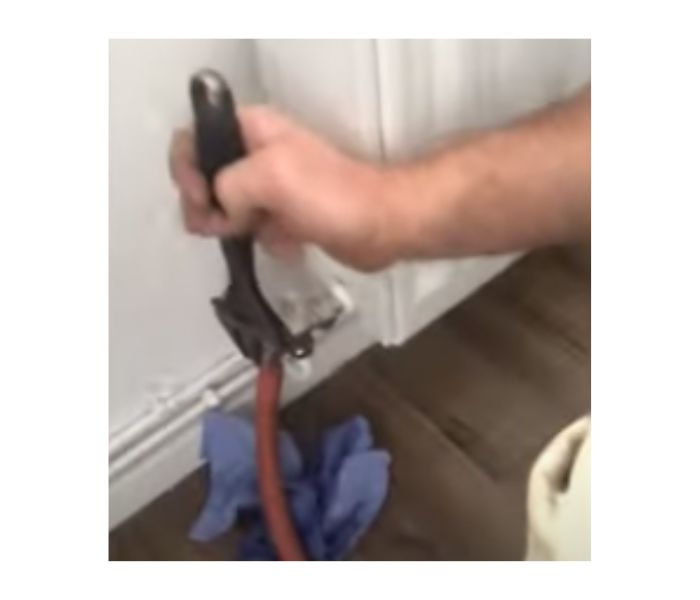
10. Refill and Repressurise the system
When complete, you will need to refill and repressurise the system before turning the boiler back on. Here are the steps to do this:
- Ensure all drain valves and bleed valves are fully closed.
- Locate the filling loop, usually found underneath the boiler.
- Open both valves on the filling loop to allow water to start flowing into the system.
- Check the pressure gauge as the system refills. Allow pressure to reach between 1-1.5 bar.
- Once at the proper pressure, close both valves on the filling loop.
- Switch the boiler power back on.
- Bleed radiators starting on the ground floor. Allow air to escape, then close bleed valves.
- Check pressure gauge again after bleeding radiators. Top up with more water if needed.
- Repeat bleeding radiators and refilling until pressure remains stable between 1-1.5 bar.
- System is now refilled and repressurized. Resume normal use.
Combi Boiler Filling Loop: Comprehensive Guide
How to drain a combi boiler video
To watch the full process in action, here’s a youtube video showing how it’s done from start to finish.
How much does it cost to drain a boiler?
Draining a boiler is normally done as part of another job like replacing some radiators or moving the boiler and the cost would be included in the overall price.
Without any problems, a plumber can do this within one hour including travelling time. If problems arise, the job could end up taking half a day and so the costs will rise.
How long does it take to drain a boiler system?
Draining a combi boiler central heating system can take between 20 minutes to an hour to complete. Having a drain-off valve on one of the ground floor radiators is the quickest method.
It is important to open the bleed valves on all the radiators that are above the drain off valve.
FAQs and Troubleshooting
- What pressure should I refill the boiler to?
You should refill the boiler to between 1-1.5 bar of pressure on the gauge. Always check manufacturer’s instructions.
- My boiler keeps losing pressure – what should I do?
Frequent drops in pressure could indicate a leak in the system. Check all radiator valves and connections for leaks. Have a Gas Safe engineer inspect if pressure continues dropping.
- How often should I drain a combi boiler?
Draining is not part of annual maintenance. Only drain when necessary, such as before extended time away or when replacing radiators.
- What if my boiler is leaking when draining?
Turn the water supply off immediately and contact a Gas Safe registered engineer. Never try to operate a leaking boiler.
Related articles:
